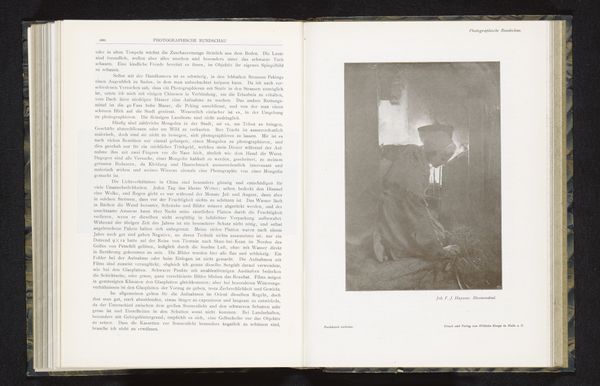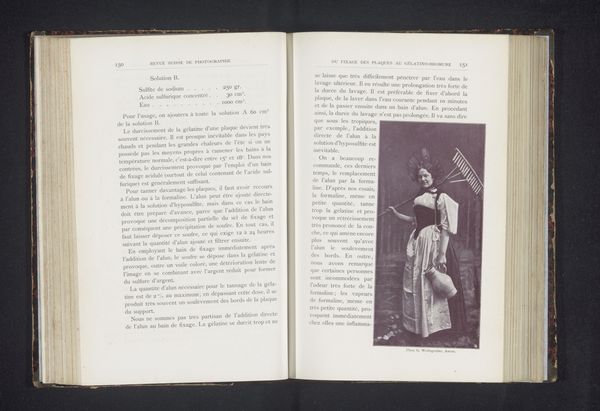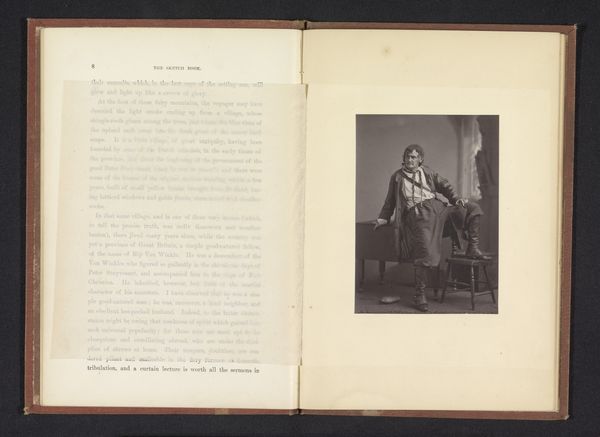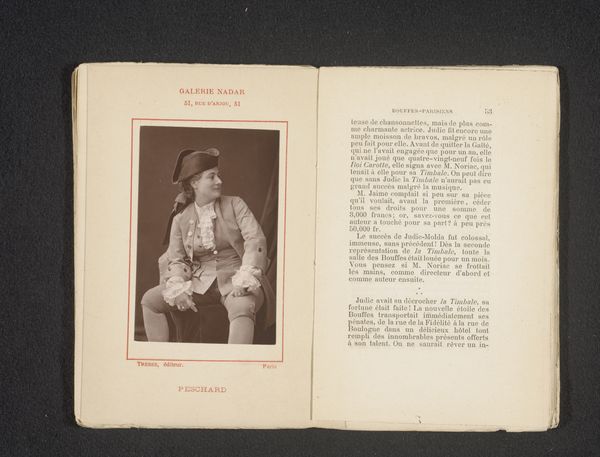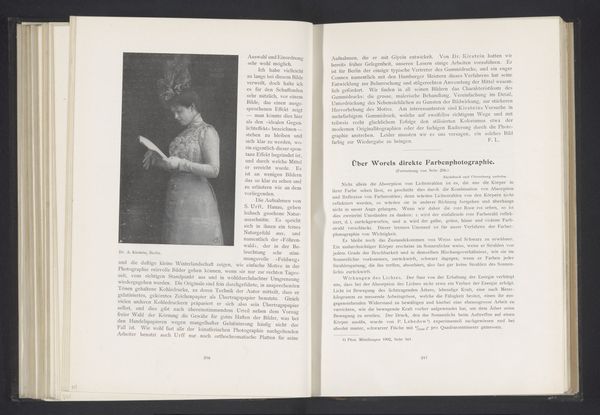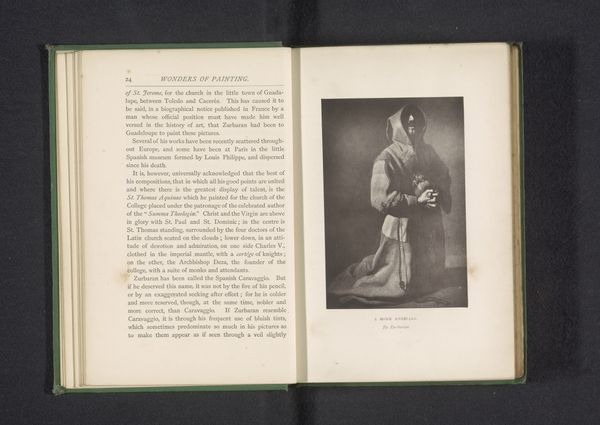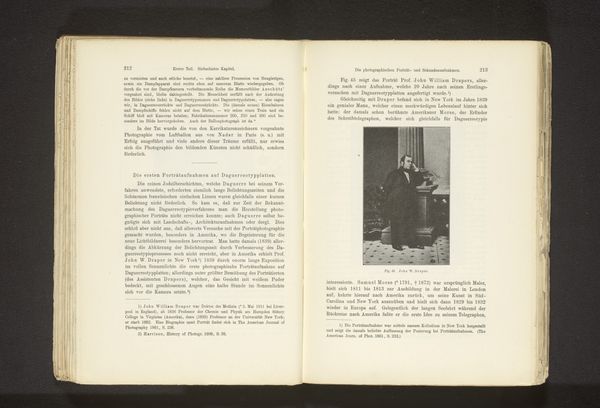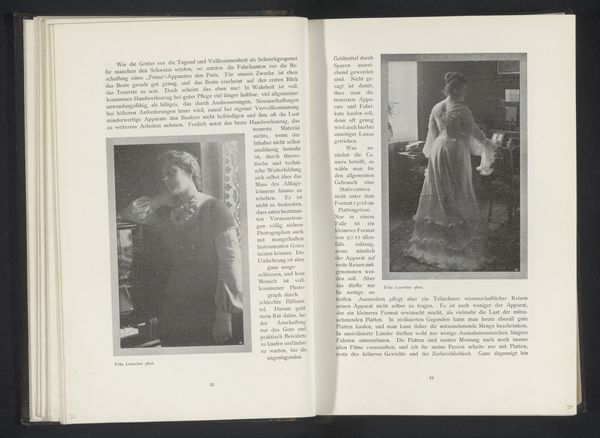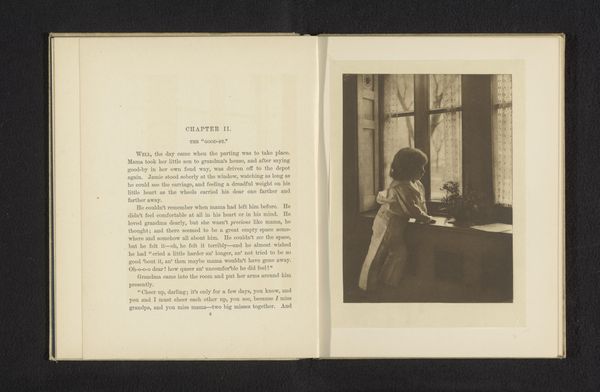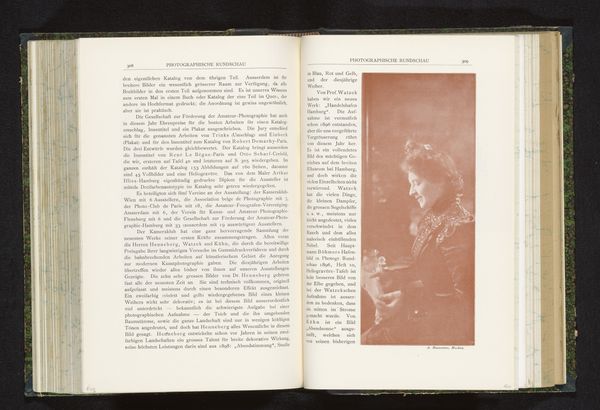
Dimensions: height 164 mm, width 121 mm
Copyright: Rijks Museum: Open Domain
Curator: Here we have an image titled "Portret van een onbekende vrouw met een kind aan de borst," or "Portrait of an Unknown Woman with a Child at the Breast," made before 1898 by George Einbeck. It’s a gelatin silver print. What are your initial impressions? Editor: It's remarkably intimate, considering it’s a printed photograph within a book. There’s something so delicate and melancholic about the lighting and the woman’s gaze; like a hidden moment captured, almost voyeuristic, but also incredibly tender. Curator: Indeed, the "genre-painting" theme certainly enhances that intimacy. The medium of photography allows Einbeck to convey a raw and unfiltered emotion that might be harder to achieve in a painting from the same era. The symbolic weight of motherhood here is palpable. Editor: Absolutely. There's a real sense of connection between them. I mean, her body, the child nestled… it’s almost primal, don't you think? There’s an immediate sense of nurturance and perhaps the universal aspect of the mother/child relationship portrayed. Also, did photographs from this era use paper so much? I get the vibe that she’s emerging out of one. Curator: That ‘paper medium’ really softens the visual field, I agree. As a gelatin silver print it would also have specific archival qualities too, linking to that sense of preserved intimacy you pinpointed. I see her gaze downward not only as nurturance, but also something tinged with resignation to circumstances we do not know. Editor: A good point, because it almost speaks of her role being prescribed rather than self-chosen. Also I hadn’t noticed, is it me, or does this image share aesthetic DNA with certain strains of impressionism? Perhaps some slight distortions, like Monet's water lilies? Curator: Very astute. It is true that Einbeck used the softer edges of this medium combined with tonal light contrasts, bringing photography very much into line with contemporary painting, which for me suggests it was his intention to bring a touch of artistry to mass-produced image. It challenges how we view everyday photography. Editor: Makes you wonder about the woman in the portrait though, doesn’t it? Did she ever know that this moment of her life would become a piece of art viewed over a century later? Spooky, but also rather beautiful in a way. Curator: It is indeed, it invites contemplation on permanence and ephemerality. A moment frozen in time, carrying echoes of both a personal and collective narrative of care, motherhood, and quiet resilience.
Comments
No comments
Be the first to comment and join the conversation on the ultimate creative platform.
